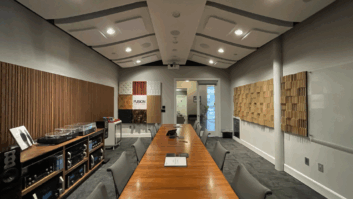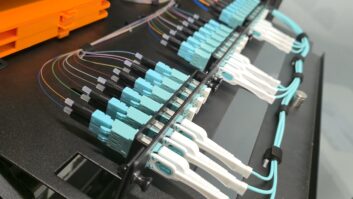It’s been 16 months, four days and 12 hours since your customer signed on the dotted line. Before we jump ahead, let’s move back to the beginning.
A potential customer makes a phone call to your firm wanting a proposal done for them. The customer’s desires are very simplistic when they first describe what type of integrated control system they want. As you make your best sell to get the customer to purchase all the latest technology in control systems. The customer stresses the importance of affordability and practicality. Being the shrewd business owner that you are, you create a proposal tailored to the customer’s needs and desires. The customer accepts your proposal and signs the contract for your company to design, engineer, install and program his new integrated control system. At the time of signing you were jubilated about the new project that you had worked so hard on selling and finally it pays off.
After several meetings with your client, you both have decided on the design of the integrated control system. Now having created the “job scope,” based from the original proposal, we now can begin the work. Sounds like a perfect scenario, right? Well it is… for now. Let’s fast forward six months and see where the project is. As you are discussing the job with your project manager, you find that it is one month behind schedule. The reason is due to several factors, waiting on sub-contractors to finish and the homeowner has made several changes in the design and location of some of his equipment. You determine that this is a minor set back and don’t think much about it. However, this is where the downward spiral begins, unless it is quickly corrected.
Moving forward into Month 12, you discuss the progress of the job with your project manager. You find to your amazement that the job has been set back an additional two months in addition to the one month it is behind already. You think to yourself that this job should be near completion. What you remember is that new construction always takes longer than originally planned. In further discussions with your project manager you come to find that your company is constantly sending employees out to the customer’s site when that particular stage of the project should already be completed. Further investigation finds that the homeowner is constantly changing the original scope of the project. Whether it is moving or adding keypad or touch panel locations, adding zones of audio, HVAC, lighting and/or security. Or it could be because the homeowner wanted to add a bathroom and had to move the location of the equipment room a couple feet to accommodate this change. All of these changes were made by the installers/technicians on the job. Mostly the changes all go unreported back to you. This scenario is definitely concerning to you as you have more jobs that require your installers’ attention. As the this stage of the project comes to a close you feel the pressure lift, as you know the “finish” part of the job will be another few months away and then the job will be done and you can collect your money.
You now have entered the “finish” stage of the project. All of the equipment is ready to be installed. As your technicians install the equipment the project moves along and it looks as if the job is going to be completed soon. The installation stage goes fairly smoothly, with only a few minor exceptions. These include a couple of defective parts from different manufacturers, a few bad wire runs and terminations and let’s not forget the number of parts that had to be ordered in addition to the original bid because of the changes the homeowner made throughout the project. For the most part this job is ready to be programmed and finalized.
The last stage of the project is underway as your programmer works feverishly to deliver the code to implement the devices and incorporate functionality based off the original bid or job scope. He’s also keeping in mind the additional items that were added to the project earlier the job.
The programmer is faced with many issues throughout the time they are involved with the project. In control systems the typical question asked by the homeowner is “Can the system do this”? And the answer is almost invariably, “Yes.”
The homeowner almost always asks the programmer if they can add more programming to specific areas of the project, even if this goes above and beyond the original scope of the project. Typically the programmer obliges the client by adding the requested programming or functionality time and time again. This can be a costly mistake as the current status of this stage of the project is already weeks behind schedule.
Back to our story…. According to your bid, the programmer has exceeded the allotted amount of time for this part of the project by several weeks and is still not finished programming the job yet. You ask him what is taking so long. After a brief discussion your programmer makes you realize that the scope of the job has increased tenfold since the original proposal was done. It has been 16 months, four days and 12 hours since the customer signed on the dotted line. You now start to realize the error in your ways.
Reflecting on the timeline of the job and how it has changed over the past year, you ask yourself, “How did this job get out of control?” This is where the integrated system dealers get themselves in trouble. It is something that almost every dealer is faced with or will encounter in their time as an integrator. However, there are things that can be done to lessen the impact on your business and your clients.
Jobs like these are more than just a home theater or simple audio/video jobs. They are full-blown integration projects. Typically including lighting, audio distribution, video distribution, climate control, security, home network, blinds and shades control, pool and spa control and a state-of-the-art home theater. All of these sub-systems have to be seamlessly integrated into the control system. This can be a bigger challenge than most of us realize. Especially when the scope of the project changes over the duration. This results in lost time and money, not to mention an unhappy client.
Let’s review where things went wrong and some possible solutions to these problems. To begin with the project scope changed drastically from the inception of the project to the completion of the project. Originally the scope was “A-B-C,” but it ended up being “A-B-C-D-E-F.” This is what we call “feature creep,” and it can be very damaging to your business. Many times this situation is unavoidable, but if you recognize and anticipate this we can make this situation profitable.
Has a manufacturer with a scheduled release date ever promised you a new piece of equipment? Did that piece of equipment show up in your shop six months to a year after they originally promised it? In many cases “feature creep” at the manufacturer level causes this. The problem is often occurs on both sides of the manufacturer and dealer ends of the spectrum.
The first step is recognizing the paradigm shift in the project. When your client wants to add more zones of audio or add touch panel locations, a change order should be written up and signed by the client before the changes are made. In fact, change orders should be signed for every change that is made to the project. It does not matter how big nor how small the change is. This is how we will take control of the project before it takes control of us.
First, we now have control of the project and we can make the appropriate changes in our timelines and change the bid accordingly. Second, we charge the client for the changes made and continue profitability. Third, we have a documented path of the entire project. How many times have you heard, “You promised me” or “I was told it would do this”? You now have the documentation and paper trail for every change and promise that was made to your client. Fourth, we provide calculated results in every project. There will be no surprises, and your clients will thank you for that. Another suggestion would be to complete the original scope of the project before you try to implement all the additional changes the client makes throughout the job. This will help the project from becoming a “moving target” and allows for systematic completion of each stage of the project’s life span. As you consider the benefits of change orders let’s move on to another problem many of us as integrators face.
Many times the products that are specified or sold have not been integrated on a job that your particular company has done. This creates a huge learning curve for your employees to hurdle. Not only do they have to be an expert with the products that they integrate; they also have to be an expert with the control system products. This can be a challenge as most manufacturers release different, untested products with little or no documentation, leaving most of the integration engineering and field-testing to you, the integrated systems dealer. This is typically something that dealers do not account for in the bids they create for customers when he or she wants the latest technology integrated into their system. The typical first word out of the salesman’s mouth is “Yes.” This is absolutely fine if you let the customer know that this is new technology and there are pros and cons associated with integrating such devices or technology into their system (And it may cost them more money). How many times have you sold or installed a product that wasn’t ready for prime time? How many hours and how much money did you waste on trying to integrate these devices and still did not get the results that you wanted? The manufacturers aren’t necessarily going to bail the dealer out if they get into trouble. We have to take it upon ourselves as the proactive dealer or integrator and let our customers know the obstacles associated with new or untested technology. We have to be aware of giving blanket answers like “Yes” or “Sure, we can do that” without knowing for a fact that your statements are true. A customer will not get upset if you say, “Let me research that, and I’ll get back to you.” By creating rapport and a solid trust with your clients, providing them with calculated results you will benefit both your company and your client base immensely and help ensure repeat business from your clients.
It’s critical to recognize the situations described above and to know how to implement processes which help your business run more efficiently and profitable. Always have a full understanding of what the job scope is and what the customers’ expectations are from the inception of the project. Implement a change order system and train your employees to know when to have one signed. Whether you end up charging the client for every change order is irrelevant. Although, having a detailed paper trail of each change order is crucial and can save your company from many headaches and/or court dates. Finally, always try to reduce “feature creep” by not selling a control system that can “do almost anything.” Working smarter will increase the efficiency of your company, while developing real-world business methodologies that will help ensure your position in this rapidly growing control system market.
Michael Taylor is president and CEO of EQ8 Technologies in Addison, Texas.







